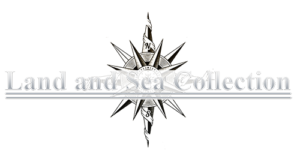Ranks 5 Plus Stars
This is a new, never used sextant in perfect condition. It is just waiting to go back to sea and where it can be put back to use. It also is perfect for a serious student or a professional who is seeking something special
I’ve been involved selling Tamaya sextants for over 30 years, and my company Nautech Maritime Corporation was instrumental in the design and introduction of their MS 733 SPICA, MS 833 Jupiter, and MS 933 Venus sextants and the famous NC 2, and NC 77 navigation computers.
Therefore, it brings me pleasure to present a NEW 2007 Tamaya Jupiter sextant, Serial Number 70123, with a 4 x 40 scope. This model uses the same frame as the more expensive Tamaya MS 733 Spica sextant whereas previous versions had a circular brace in the frame’s center. With this new version, the factory no longer provides the rarely used accessory cap filters for the telescope’s ocular lens or spare bulbs. Expect new sextant prices to rise in 2008, and to pay $2000.00 for a new one.
The case is the new style plastic one which is much improved feature over the early wood case. The numbers match.
CONDITION: This is a brand new sextant in new sextant condition..
The lighting works. All moving parts turn freely. Nothing is broken. There are no exceptions. The supplementary shades which are no longer offered were rarely, if ever, used. Mirrors are perpendicular to frame. Both mirrors are without blemish. The sextant’s paint is new. All the numbers match. This sextant is excellent condition. Adjustable index and side error are nil.
STAR RATING: Without qualification, this
instrument rates 5 PLUS STARS
COMPANY HISTORY: To my knowledge, no public history has ever been published by Tamaya or anyone else. What I know from my personal relationships was that the company was founded in 1675. That is not a misprint, over 328 years ago. Its original business was trading beads. I believe that it was during WW II, it first got into the sextant business. Prior to that its major emphasis was in surveying instruments which was always the larger portion of its business. Somewhere along the line it was acquired by K. Hattori interests. Hattori is a name much like Smith in this country, but this Hattori was an industrial giant having founded Seiko Watch and Epson Computers. Yasuo Hattori became the chief executive officer, Ito his assistant, and under their leadership the company aggressively expanded its manufacturing capabilities and interest in marine navigation. This was done with the introduction of a new line of sextants starting in 1975 which included the MS 733, Spica, then the moderately priced Jupiter, MS 833, and lastly the 7/8 scale Venus, MS 933. Concurrently. a line of hardwired navigation computers was introduced starting with the famous NC 2, then the NC 87, and lastly the NC 2000 which may still be in production. I went back to sea in 1978, but on a personal level have kept in touch with the Hattori’s ever since, most recently visiting in Miami in 2008.
QUALIFICATIONS: We are one of the few company’s still selling navigation instruments that know anything about them. For purposes of judging whether Joel’s opinion counts, he was the editor of the chapter on sextants of the 1977 Edition of “Bowditch”, The American Practical Navigator, NAVPUB 9; a member of the U.S. Naval Academy Navigation Symposium Board, 1975 -1978; the author of a book on marine sextants, Cornell Maritime Press,1975, and the founding president of Nautech Maritime Corporation which partnered with Tamaya of Japan in the introduction of the MS 733 Spica, the MS 833, Jupiter, MS 933 Venus sextants and the famous NC-2 navigation computer, in the U.S. market. Joel is a retired Master Mariner, and held a U.S. Navy “D” Qualification as a Senior Skipper – Oceans. For six years he was a Varsity Offshore Coach at the U.S. Naval Academy.
Some of his memberships include the: Association of Naval Aviation, Silver Wings, The Tailhook Association, Naval Academy Sailing Squadron, McCampbell’s Aces Squadron, Naval Historical Foundation, and the Naval Order of the United States.
Model 833
JUPITER STANDARD SPECIFICATIONS:
Measuring Range: -5 to 125 degrees
Accuracy: +/-12 seconds.
Telescopes: 4x40mm: angle of view 7 degrees, relative brightness 100. All optics are fully coated.
Frame: Lightweight die cast aluminum alloy with corrosion resistant black finish. Bronze arc. Vernier
Scale: has 5 marks & reads to 0.2′.
Index Mirror: 57 x 42 mm. aluminized on the rear side.
Horizon
Mirror: 57mm diameter.
Shaded:
1. 4 for index mirror
2. 3 for horizon mirror
Weight: 3 lbs 12
oz, 7 lbs in case
Carrying case: Plastic
INCLUDED ARE:
1 Tamaya Nautech Model 833 sextant frame
1 4 x 40 Star scope
1 Whole horizon mirror
1 bulb installed
1 Mirror adjustment wrench
1 New style plastic sextant case
1 Tamaya Certificate of Accuracy
Batteries included. They should be inserted with the positive terminal to the bottom.
For those seeking more information about the modern marine sextant I suggest they get a copy of a book written in 1975, now out-of-print. The Myths & the Truth about Selecting a Marine Sextant. Cambridge MD: Cornell Maritime Press, 1975. 44pp, 10 illustrations. Topics include scope power, mirrors, shade glasses, theoretical brightness, accuracy, workmanship, accuracy, comparison of specifications. It is available at the University Library, all locations, of The California State University for free.
